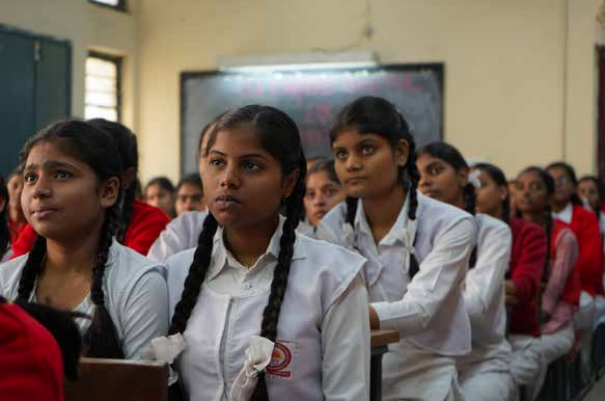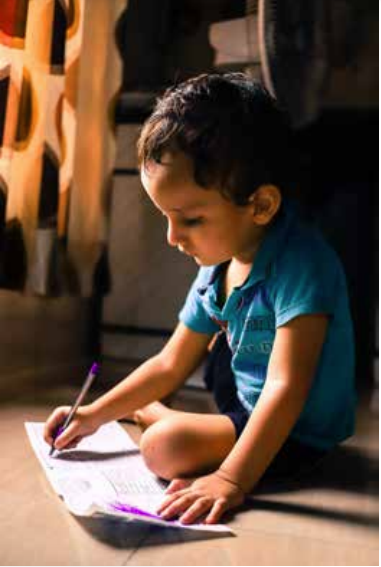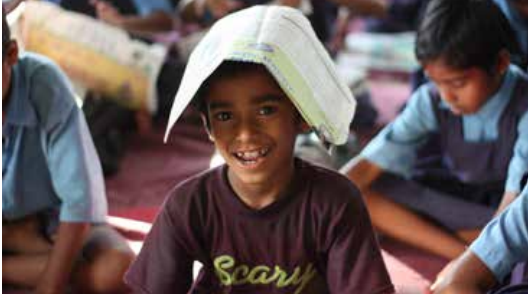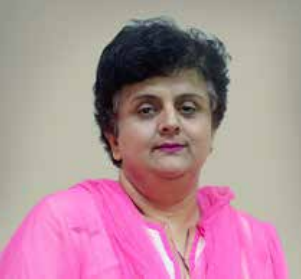Learning disability in Children

Introduction
Learning disability is a diverse group of disorders in which children with at least average intelligence have problems processing information or generating output. It is the inability to learn at the age appropriate academic level. It can affect children of any age causing difficulty in reading ,writing ,spelling ,comprehension and mathematics. It is used synonymously with specific learning disability or specific learning disorder according to DSM-V.
There had been variations in understanding LD although in 2001 Lyon et all put forward one of the most simple concepts of learning disability as a form of “unexpected underachievement”.
Definition
Learning disabilities are a heterogeneous group of disorders where the individuals unexpectedly fail to competently acquire , retrieve and use information .The academic achievement is lower than expected based on the child's overall intelligence.
LD has been defined as a neuro developmental disorder of biological origin manifesting in learning difficulties and problems in acquiring academic skills which are markedly below age level.
LD manifest during early school years and it is not attributed to intellectual disabilities or neurological or motor disorders.
The difficulty should last for at least six months for diagnosis.
Prevalance
India reported incidence varies from 1.6% to 15%. Writing upon age range ,survey method ,tool used and region of the country. A cross-sectional study in Chandigarh reported 3.08% children with LD. Another study conducted at a school in Jaipur reported 21.6% dyslexia 15.5% dyscalculia and 22.3% dysgraphia. Approximately 5% of all students in public schools in the United States are identified as having learning disabilities. While another study in the US reported that 7% of children aged 3 to 17 years of age have learning disability.
Etiology and pathogenes
Perinatal ,genetic, medical ,psychologic ,environmental and social cultural influences.
Genes that can be associated with neuro developmental disorders- reading disorders can be both familial and heritable gene loci on chromosome 6 & and 15.
Perinatal risk factors that are associated with neurodevelopmental dysfunction include very low birth weight, severe intrauterine growth restriction , perinatal hypoxic ischemic encephalopathy , perinatal exposure to substances like alcohol and drugs, increase risk of academic and frontal lobe disorders also associated with environmental toxin lead ,drugs like cocaine ,infections like meningitis and HIV, brain injury secondary to periventricular Leukomalacia.
Types of learning disability:
Dyslexia :
It is a specific type of reading disorder caused by deficits in phonological processing.
Dysgraphia:
It is writing disabilities caused by a range of neuro developmental weaknesses including problems with handwriting (fine motor or graphic-motor and visual -spatial perception)
Dyscalculia :
It is a disability with mathematical concepts. Such as problems with number sense, problems retrieving math facts ,difficulty with the language of maths ,word problems in math and visuospatial and organisational demands of math.
Functional consequences of SL:
- Lower academic attainment
- Higher rates of high school dropout
- Lower rates of poor secondary education
- High level of psychological distress
- Poor overall mental health
- Higher rates of unemployment and underemployment
- Higher rates of poor mental health outcome including suicidal tendency

Comorbid conditions:
Attention deficit hyperactivity disorder :
Inattention ,hyperactivity, impulsivity, difficulty sustaining focus ,being disorganised.
Autism spectrum disorder:
Impairment in reciprocal social communication and social interaction, restrictive repetitive patterns of behaviour interest or activities.
Communication disorders:
Deficit in language speech and communication.
Developmental coordination disorders:
Impairment predominantly in gross and fine motor skills including handwriting skills, pedaling , buttoning shirts , completing puzzles ,using zippers, playing ball games.
Diagnosis of LD:
Diagnosis is made primarily by detailed comprehensive history
(Developmental ,medical ,family and education) school reports and psychosocial assessment.
Psychometric tests: Help to confirm the presence of LD and also identify targets for interventions. Studies conducted in India to measure prevalence of LD have used screening questionnaires such as specific learning disability screening questionnaire or designed screening tools for class teachers to identify learning disorders .Paediatricians could use the SLD -SQ or focus on certain pointers in the latter to identify at least at risk Children in order to refer them for thorough evaluation by developmental paediatricians. The pointer includes unexplainable absence from school, below average academic performance, poor writing ability , problem in reading ability, poor mathematical competence ability and problems in recall.
Concerns in two or more of these areas should be a point of referral.
Mandatory vision and hearing assessment should be a part of the protocol.
The rehabilitation Council of India also recommends:
Informal assessment which includes parental interviewing after consent, gathering information from teacher in school , reviewing students work books ,intervening with the child.
Formal testing includes criteria and non-reference tests.
LD have two componentsbr
1) testing for potential performance discrepancy where a two year discrepancy between potential and performance is an indicator of possible LD.
2) testing of processing abilities .
One or more test have to be administered based on the child’s age and cognitive ability.
The range of tests that can be administered are
Intellectual assessments:
- Woodcock Johnson‘s test of cognitive ability
- Malin’s intelligence scale for Indian children
- Stanford Binet Intelligence Test
- WISC - 4 intelligence test
ACHIEVEMENT ASSESSM:
Nimhans battery:
- Level - I 5-7 years and
- Level II 8-12 years
- GLAD - 6 years onwards
- WRAT - 4 Wide Range of Achievement test 4 - 5 years onwards
- Woodcock Johnson tests of achievement for children - preschool to adulthood
Red flag signs for learning:
Preschool:
- Delayed speech and language development
- pronunciation problems
- slow vocabulary growth
- difficulty in rhyming words
- trouble learning numbers
- alphabets and days of the week
- restless and distracted or
- Poor ability to follow simple directions or routines
School age:
- Family history of Reading disability
- Reading slowly and incorrectly
- Skipping lines while reading aloud
- Repeatedly making spelling mistakes
- Untidy or illegible handwriting with poor sequencing
- Inability to perform even simple mathematical calculations
- poor school grades despite normal intelligence
- pronunciation difficulties after 5 to 6 years
- difficulty attending to the sound of words.
- confusing words that sound alike delayed. establishment of laterality difficulty in fine motor skills.
- clumsy child.

India is a multilinguistic country. It is important to develop skills to diagnose LD in non-English speaking students . RCI has advised in formal assessment for the students in absence of standardised scales.
National Institute for mentally handicapped NIMHANS has developed the grade level assessment device (GLAD)for children with learning problems in schools.
It is very essential to rule out other impairments as the primary cause of learning difficulty such as ID, sensory deficits, physical impairments, history of multiple education settings, poor educational background, lack of prior learning and cultural differences. The intervention should be interdisciplinary and individualised to each child. Required services include developmental paediatric evaluation, clinical psychological assessment, ophthalmological and audiology evaluation , occupational assessment and remedial education, (educational assessment and individualised educational program.). Counselling for family.
Treatment:
- Remedial education
- Which includes assessment of a child's academic strengths and weaknesses and development of an educational individual program having short-term and long-term goals and monitoring of the child’s progress
- One to one teaching
- Physical exercises
- Meditation
- Schedule / Time table
- Positive Reinforcement
- Medical treatment for deficiencies
- Treatment for Co morbidities

Screening of all children at the age of seven years for LD in paediatric clinics will be highly beneficial as no retention policy has led to delayed identification of learning problems. The National Institute of open schooling should be given as an option for kids struggling after a few years of remedial training. LD provisions are beneficial and act to function as a corrective lens which will deflect the distorted array of absurd scores back to where they ought to be. These provisions aim to level the playing field for the students as their academic performance would now be matching with their intellectual potential.
Concessions for students with LD sub types include
- One hour or 25% extra time in public exams
- No reduction of marks for grammar and spelling mistakes
- Use of calculator in maths exam. Exemption from writing one language exam
- Use of subscribe or typing answers on a computer and 20% grace marks
- Inclusion policy in mainstream school.
- Learning disability has been included in the recent bill (Rights of persons with disability Bill 2011 and passed as an Act in 2016 )




